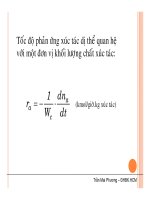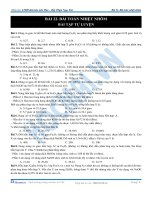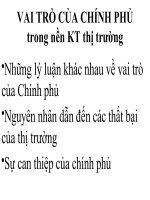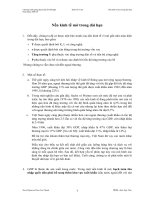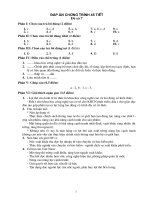PASSAGE 7
Bạn đang xem bản rút gọn của tài liệu. Xem và tải ngay bản đầy đủ của tài liệu tại đây (31.51 KB, 2 trang )
PASSAGE 7
Many folk cures which have been around for centuries may be more therapeutic than previously
suspected. A case in point is that of penicillin. Alexander Fleming did not just randomly choose cheese
molds to study when he discovered this very important bacteria-killing substance. Moldy cheese was
frequently given to patients as a remedy for illness at one time Fleming just isolated what it was about the
cheese which cured the patients. In parts of South America, a powder obtained from grinding sugar cane
is used for healing infections in wounds and ulcers. This usage may date back to pre-Colombian times.
Experiments carried out on several hundred patients indicate that ordinary sugar in high concentrations is
lethal to bacteria. Its suction effect eliminates dead cells and it generates a glasslike layer which protects
the wound and ensures healing. Another example of folk medicine which scientists are investigating is
that of Arab fishermen who rub their wounds with a venomous catfish to quicken healing. This catfish
excretes a gellike slime which scientist found to contain antibiotics coagulant that helps close injured
blood vessels, anti-inflammatory agents, and a chemical that directs production of a glue-like material
that aids healing. It is hoped that by documenting these folk remedies and experimenting to see if results
are indeed beneficial, an analysis made, and synthetic substances be developed for human consumption.
Question 1. This passage is mainly about ________.
A. isolating antibiotics in cheese, sugar, and slime
B. antibiotics in the field of medicine
C. using folk medicines in place of modern medicines
D. the validity of folk remedies and their use for advances in modem medicine
Question 2. The word "therapeutic" in paragraph 1 is closest in meaning to _______.
A. medicinal
B. traditional
C. psychological
D. physiological
Question 3. It can be inferred from the Message that Alexander Fleming ________.
A. suspected medicinal properties of mold
B. discovered moldy cheese
C. enjoyed eating cheese
D. isolated infectious patients
Question 4. The word "eliminates" in paragraph 2 is closest in meaning to ________.
A. kills off
B. disposes of
C. excretes
D. cleanses
Question 5. To the passage, ________.
A. bacteria feed on sugar
B. sugar kills unhealthy cells
C. lass is formed from sugar
D. sugar promotes healing
Question 6. The gellike substance which promotes healing comes from ________.
A. Arab fishermen
B. catfish bodies
C. catfish venom
D. coagulants
Question 7. Which one of the following is NOT an important quality of the catfish slime?
A. It prohibits inflammation
B. It stops bleeding
C. It produces mold
D. It fights bacteria
Question 8. The word "consumption" in the last paragraph is closest in meaning to________.
A. utilisation
B. destruction
C. experimentation
D. manipulation
Question 9. In what way are cheese molds, sugar, and catfish slime similar?
A. They eliminate dead cells
B. They heal wounds
C. They fight bacteria
D. They cause blood clots
Page 1
Question 10. According to the passage, why is it important to study folk medicine?
A. To perpetuate superstitions
B. To advance modern medical practices
C. To experiment with synthetic substances
D. To document cultural heritages.
ĐÁP ÁN
1-D
2-A
3-A
4-B
5-D
6-C
7-C
8-A
9-C
10B
Page 2

